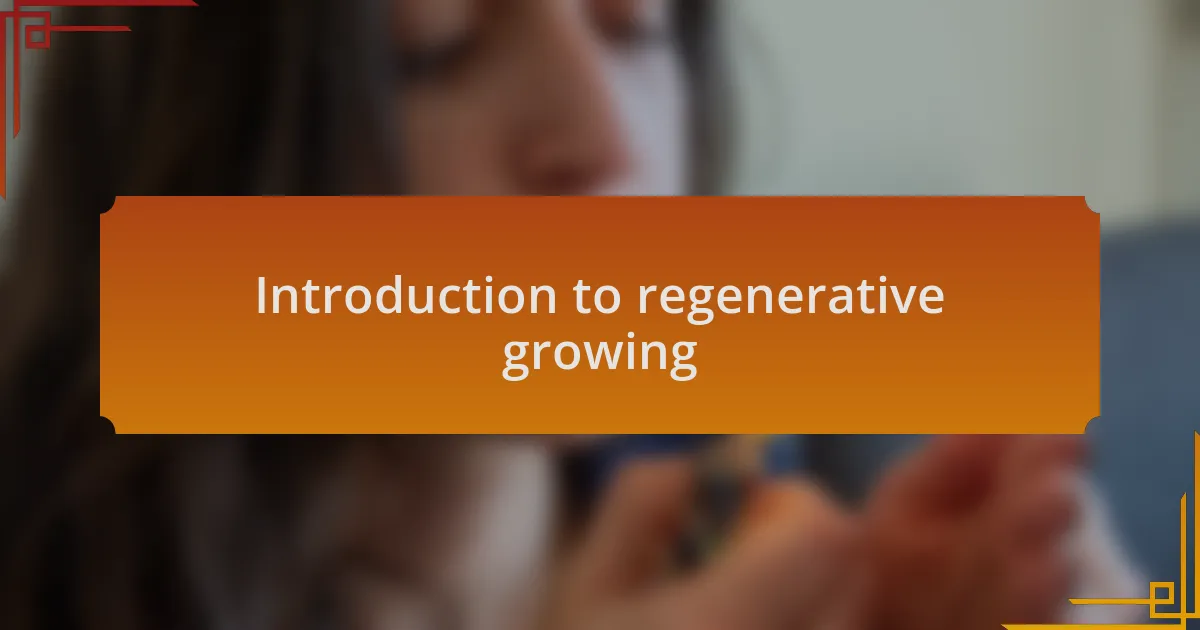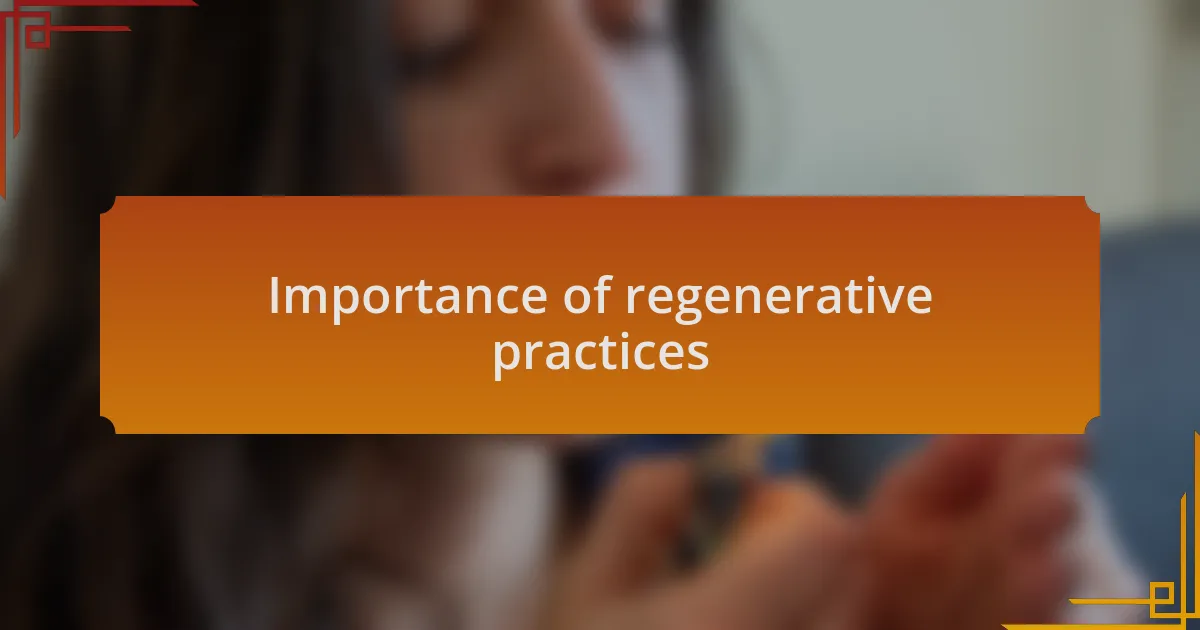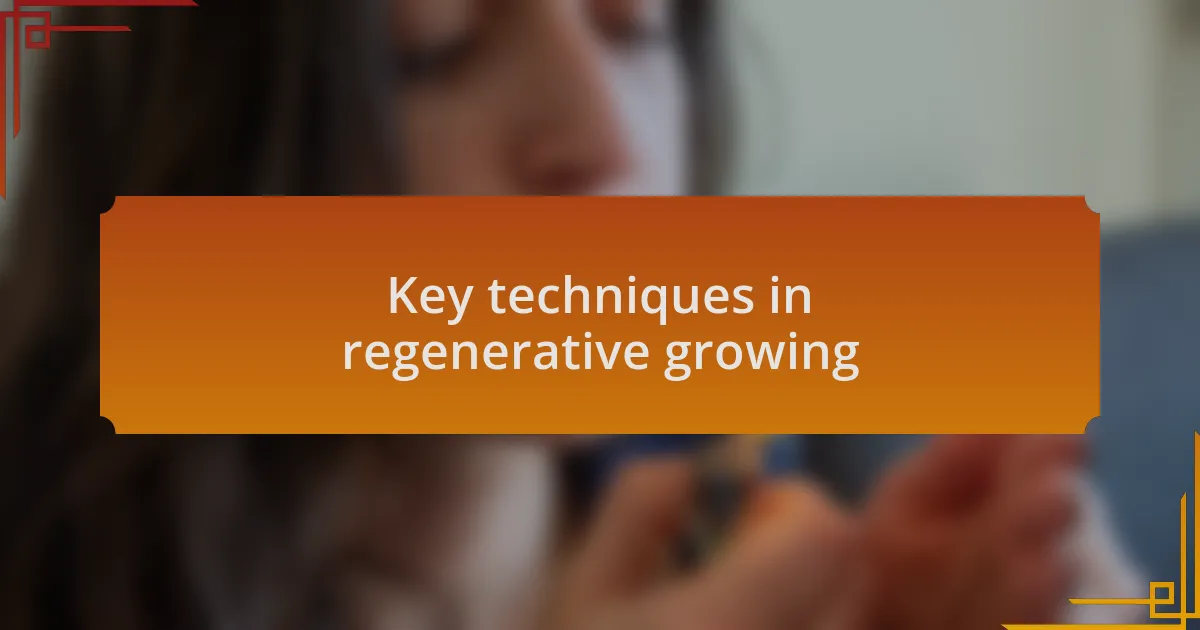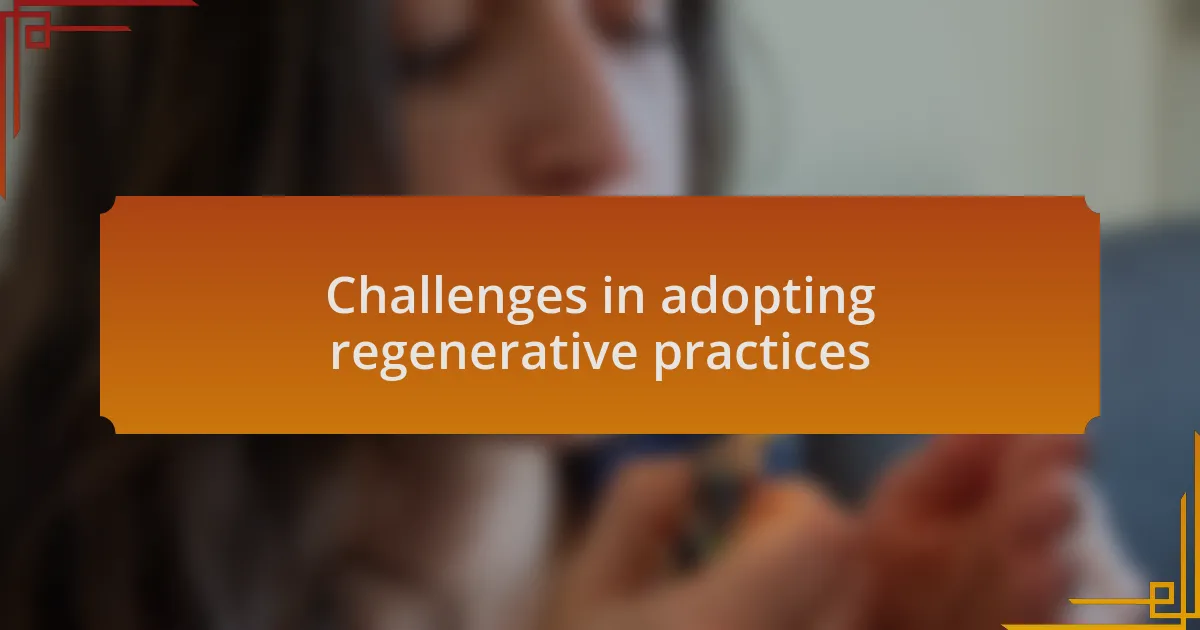Key takeaways:
- Regenerative growing emphasizes sustainability, soil health, and biodiversity, fostering a harmonious relationship with nature.
- Key techniques include cover cropping, composting, and mulching, which improve soil quality and support vibrant ecosystems.
- Challenges in adopting regenerative practices include a steep learning curve, resource accessibility, and the need for patience and community support.

Introduction to regenerative growing
Regenerative growing is not just a cultivation technique; it’s a philosophy that embraces sustainability and harmony with nature. Imagine walking through a vibrant garden where every plant thrives in an environment designed to support its growth. That’s the beauty of regenerative practices—it’s about nurturing the soil, improving biodiversity, and enriching ecosystems.
As I’ve delved into regenerative growing, I’ve realized how it transforms the relationship between the cultivator and the land. Have you ever stopped to consider how plants interact with their environment? By using natural amendments and organic practices, we can create an ecosystem where plants not only survive but flourish. This approach resonates deeply with me because it fosters a profound connection with the earth, promoting a cycle of life rather than depletion.
When I first started exploring regenerative methods, I felt a sense of optimism—a belief that cultivation could be a restorative process. Learning about cover crops and composting, I discovered how these techniques help combat soil erosion and enhance nutrient cycling. Isn’t it inspiring to think that by caring for the land, we can also care for ourselves and future generations?

Importance of regenerative practices
Regenerative practices are crucial for maintaining soil health and fostering biodiversity. I remember a time when I attempted to grow cannabis in conventional soil and quickly became disheartened by the lack of vigor in my plants. It was only when I started experimenting with regenerative techniques—like incorporating cover crops—that I witnessed a remarkable transformation. The plants not only thrived, but they seemed to resonate with the energy of the soil, creating a robust ecosystem right in my backyard.
The importance of these practices extends beyond mere cultivation; they hold the key to restoring our environment. Have you ever noticed how an untouched piece of land flourishes? That’s the essence of regeneration. By enriching the soil with organic matter, I’ve seen firsthand how it creates habitats for beneficial microbes and insects. This not only improves the resilience of my garden but also contributes to the larger ecological balance, showing that every little action counts in the grand tapestry of nature.
I often reflect on the emotional weight of what regenerative practices represent. They symbolize hope for a sustainable future, a way to reconnect with nature and heal our planet. When I witness the vibrant interplay of life in my garden, I can’t help but feel a sense of responsibility. Are we not stewards of this earth? Embracing regenerative methods feels like part of a heartfelt commitment to nurturing our world for generations to come.

Key techniques in regenerative growing
Key techniques in regenerative growing often begin with the practice of cover cropping. I remember the first time I planted clover between my cannabis plants. Not only did it prevent weeds, but it also enriched the soil while providing habitat for pollinators. I found it fascinating to watch the diverse wildlife that flourished around my garden, reinforcing my belief that these techniques create a vibrant ecosystem rather than just a means to grow plants.
Another essential technique is composting. In my experience, creating a compost pile transformed how I viewed waste. Instead of tossing leftovers aside, I began to see them as a resource. The rich, dark compost I eventually produced was teeming with life and provided a nutrient boost to my cannabis plants. Honestly, there’s something deeply satisfying about watching your plants thrive from what might have otherwise been discarded.
Lastly, I cannot overlook the value of mulching. When I started using straw and wood chips, I noticed how it significantly improved soil moisture retention. I often found myself reflecting on how something as simple as a thick layer of mulch had such a profound effect on my growing results. Isn’t it amazing how small changes can lead to such big transformations? Embracing these techniques made me feel more connected to the land, enhancing not just my gardening but my whole perspective on sustainable living.

Challenges in adopting regenerative practices
Adopting regenerative practices can be daunting, especially for those transitioning from conventional methods. I recall my initial hesitation when considering the investment of time and resources needed to shift my growing techniques. It felt overwhelming, as if I was standing at the base of a mountain, unsure if I could make the climb.
One significant challenge I’ve encountered is the learning curve associated with regenerative practices. The intricacies of soil health, crop diversity, and ecosystem dynamics can be complex. I often wondered—how do I know if the changes I’m making are truly effective? Through trial and error, I learned that patience and observation were my best allies. The results didn’t come overnight, but with persistence, I began to see the benefits unfold.
Additionally, access to resources and community support can be limited. I remember the frustration when I struggled to find locally-sourced organic amendments. It made me realize that building a network of like-minded growers and sharing knowledge can be crucial. Have you experienced that sense of isolation while trying to innovate in your own practices? Connecting with others in the regenerative community opened my eyes to solutions I never would have considered on my own.